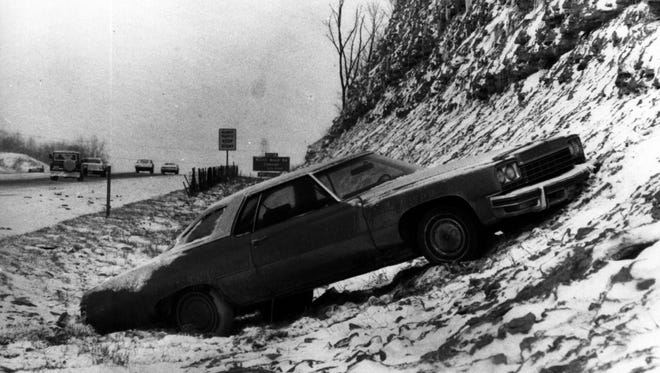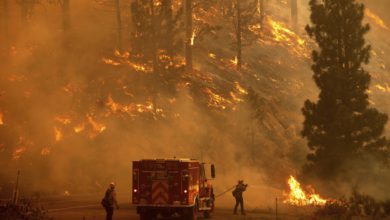

The winter of 1977 was colder. Three other storms dumped more snow on Cincinnati. So, what made the Great Blizzard of 1978 so devastating?
The storm that struck 40 years ago brought snow — just under seven inches fell in Cincinnati on Jan. 26 and 27. But there was already a huge pile of snow on the ground. The snow was 14 inches deep on Jan. 21.
Then, the blizzard brought near-hurricane strength wind gusts that heaped the snow into enormous drifts. Some snowdrifts reached 15 to 25 feet in height, whipped up by 60 mph winds. Visibility was zero.
The winds resulted from an "explosive intensification of a surface low-pressure system moving north from the Gulf Coast into Kentucky and Ohio," according to the National Weather Service in Wilmington.
Bomb cyclone.
If that sounds familiar, it's because the same thing happened in 2018 on the East Coast. Fox19 Chief Meteorologist Steve Horstmeyer said the weather phenomenon — also called "snow hurricane" or "bombogenesis" — hit Cincinnati hard.
"It exploded so very very quickly and strongly that Cincinnati saw snow that was falling as slushy snow, freeze as the temperature plummeted," Horstmeyer said.
Though bomb cyclones typically happening on the coast, they can happen anywhere.
"This would have been of historic proportions, there's no doubt about that," Horstmeyer said.
More than 70 people died in Ohio, Kentucky and Indiana as a result of the epic storm, according to the weather service.
Blizzard conditions arrived in Cincinnati around 1 a.m. Jan 26 with an arctic airmass pushing in. By 7 a.m., Cleveland was engulfed.
Temperatures plunged into the single digits with wind chills around minus 50 degrees.
"An ore carrier stranded in thick ice on Lake Erie just offshore from Sandusky reported sustained winds of 86 mph with gusts to 111 mph that morning!" according to an NWS report.
Thousands of trees and many miles of electric and telephone lines were blown down. Hundreds of thousands of homes were left without power and heat, and means of communication.
Roofs collapsed under the weight of the snow. Cars were buried. Interstate 75 was closed for three days.
The Red Cross and armed forces stepped in to help get food to people. Helicopters were called in for medical help. And volunteers with snowmobiles and four-wheel drive vehicles helped move medical crews.

"College students mingled with business travelers at the airport to wait it out," according to one Enquirer account. "Some roads, like Mason-Montgomery in Warren County, had been plowed so many times with so much buildup on the sides that they were tunnels."
And, yes, the river "was a jumble of giant blocks of ice," The Enquirer's Jim Rohrer wrote in 2011.
"Many people claim to have driven cars across it in '78, but only a few did," Rohrer wrote.

Winter records set
The winter of 1978 was a record-breaker.
Seasonal snowfall record: 53.9 inches of snow fell in winter of 1977-78
Monthly snowfall record: 31.5 inches of snow fell in January 1978
Longest stretch with 1 or more inches of snow on the ground: 63 days from Jan. 8 through March 11
Longest stretch with 5 or more inches of snow on the ground: 43 days from Jan. 13 through Feb. 24, 1978.
Longest stretch with 10 or more inches of snow on the ground: 10 days from Jan. 16-25
What caused the blizzard
This storm was the result of a relatively rare merger of two upper-level waves (one over Texas and one over the Northern Plains) that caused an explosive intensification of a surface low-pressure system moving north from the Gulf Coast into Kentucky and Ohio.
The massive storm system produced some of the lowest pressure readings ever recorded in the United States mainland that were not associated with hurricanes. In fact, several weather stations in the storm's path had to readjust their barographs as station pressures fell below the initial chart scale.
On Jan. 26, 1978, the barometric pressure dropped to 28.81 inches at Cincinnati. Even more impressive was Cleveland's record low-pressure reading of 28.28 inches, which remains the lowest pressure ever recorded in Ohio and one of the lowest pressure readings on record within the mainland United States (not associated with a hurricane).
Source: National Weather Service in Wilmington
Source link











